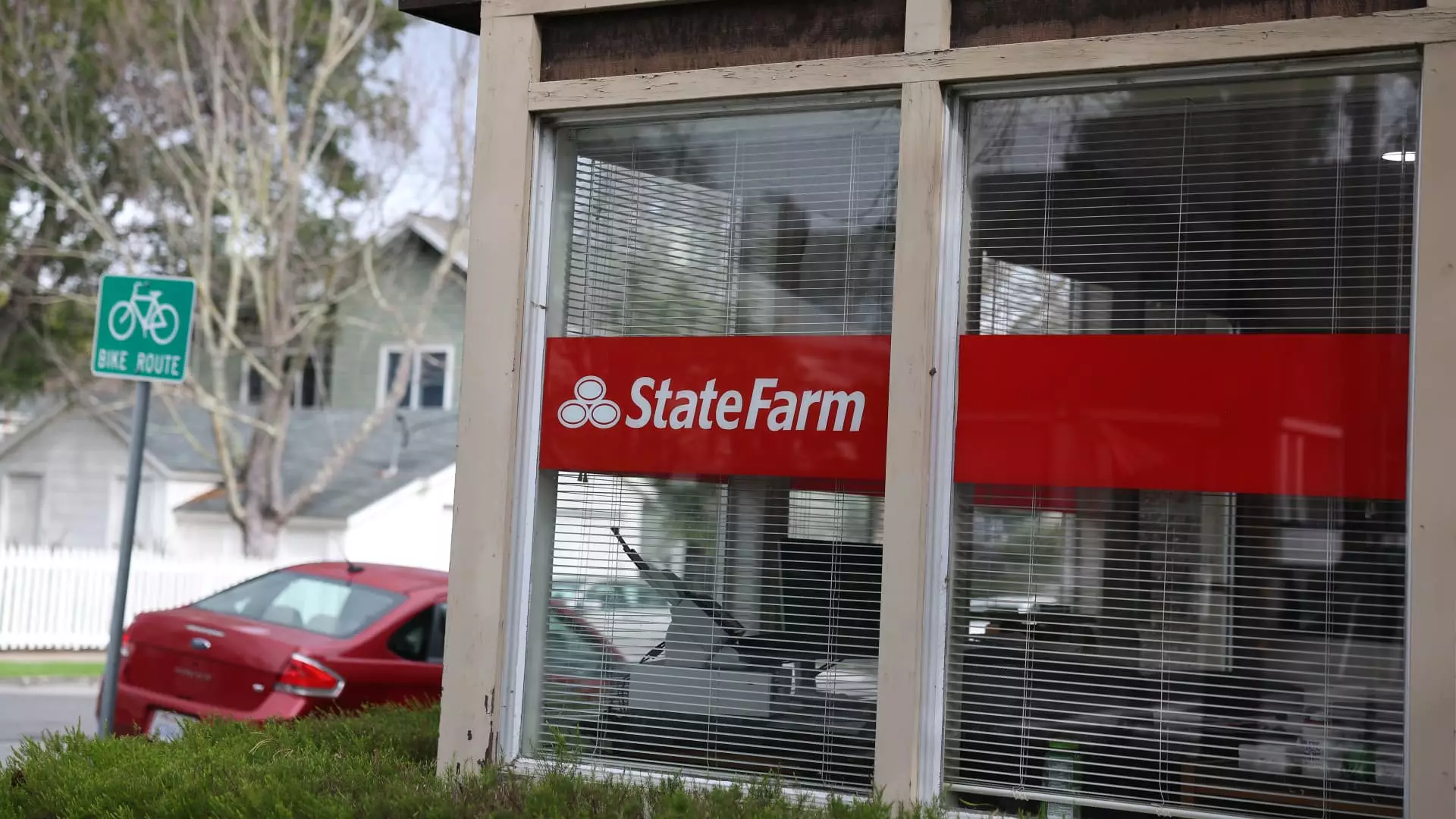In a high-stakes hearing, State Farm is desperately petitioning for a significant rate hike on homeowner insurance in California, a decision that could reshape both the insurer’s fortunes and the lives of countless residents. The insurer’s current predicament is dire, propelled by the catastrophic wildfires that swept through Los Angeles, resulting in devastating economic losses estimated between $250 billion and $275 billion. As the California arm of this national insurance giant faces an uphill battle, the implications are far-reaching, raising a critical concern about the sustainability of homeowner insurance in a state beset by natural disasters and escalating costs.
In recent years, California’s wildfires have not only inflicted destruction but have also revealed a deeper crisis in the insurance industry itself. State Farm’s strategy to raise rates is a bid to recover and bolster its capital reserves, a necessary move given that they currently hold around 20% of the homeowner market in the state with close to three million active policies. However, their situation has prompted critical questions about the balance of risk and affordability. If State Farm is any indicator, homeowners are being shoved closer to the edge of fiscal instability, with potential ramifications that could engulf millions.
From Bad to Worse: A Market Under Siege
The words of an attorney representing the California Department of Insurance likened State Farm’s predicament to the Titanic, warning that “the iceberg is in sight.” Such alarming metaphors highlight a tangible fear that the insurance market in California is on the brink of disaster. The wildfires have exacerbated an already tenuous situation—insurers like State Farm are struggling to stay afloat amidst rising claims and dwindling resources. Many are now forced to raise their rates to somehow match what they’re expected to pay out—a dangerous cycle for consumers already grappling with high living costs.
State Farm’s plea for a newly adjusted rate hike—initially proposed at 22%—has since been settled at a slightly more palatable 17%. Yet, this adjustment, while it may appear more measured, speaks volumes about the creeping financial distress surrounding the insurer. Many Californians are understandably skeptical. Why should they bear the burden of increased costs when so many have likely lost their homes or are battling to make ends meet? The shifting rationale for such increases raises a legitimate concern regarding corporate accountability.
Dissecting the Data: An Unsustainable Crisis
Economist David Appel aptly described California’s current insurance landscape as unsustainable. The ongoing trend towards heightened premiums without equivalent reimbursement for losses is deeply troubling; the balance between risk management and financial health appears to lean perilously towards instability. With State Farm discontinuing new policies, the picture only grows bleaker. If left unaddressed, this crisis could prompt an exodus of insurers from the state, leaving consumers stranded in a sea of uncertainty.
The economic implications of this crisis extend beyond mere numbers. When companies like State Farm halt writing new policies or refuse to renew existing ones, it signals to potential homeowners that their investments might not receive the protection they deserve. The FAIR plan—the state’s insurer of last resort—has seen an exponential rise in demand as customers flock to it after being dropped. However, it operates with limited capacity, thereby worsening the situation rather than alleviating the burden on consumers.
Political Ramifications: The Tug of War
California’s elected Insurance Commissioner, Ricardo Lara, finds himself navigating choppy waters as he weighs public concerns against the realities of a fragmented insurance market. His reluctance to approve sweeping rate hikes illustrates a fear of backlash from an already vulnerable populace. Advocates for consumer rights, like the advocacy group Consumer Watchdog, have continually pushed back against state-sanctioned rate increases, declaring that insurers like State Farm have not justified their hike claims sufficiently.
This clash represents a microcosm of broader political tensions regarding the intersection of fiscal responsibility and consumer advocacy. There must be a balance between ensuring that insurers remain solvent and protecting the rights and financial wellbeing of the average homeowner. As we press forward, the systemic inadequacies inherent in California’s insurance framework demand a serious reckoning. A sustainable solution requires not only immediate actions like approving rate hikes but also a long-term strategy that reimagines the very fabric of how insurance is administered in a disaster-prone state.
Ultimately, it’s clear that a coastal state battling climate change and overwhelming natural disasters must urgently innovate its approach to home insurance coverage. The current model is faltering, and solutions that prioritize both insurer stability and homeowner security are critically needed. With millions at stake and a community reeling from losses, the query remains: can we find a path forward that champions both accountability and access?

